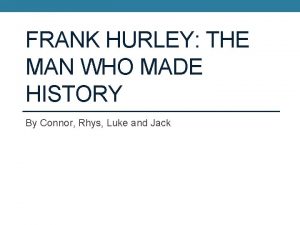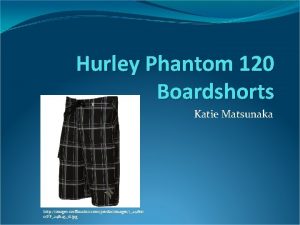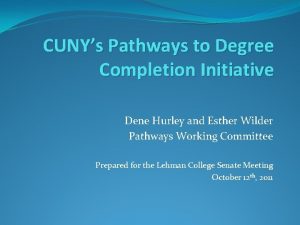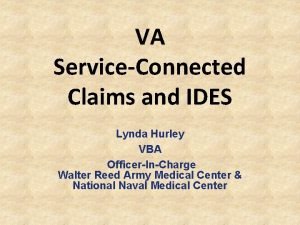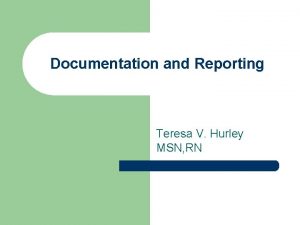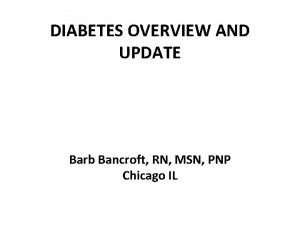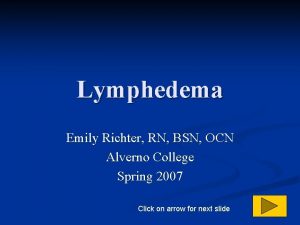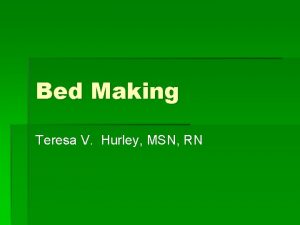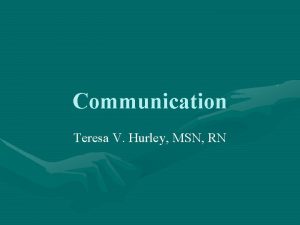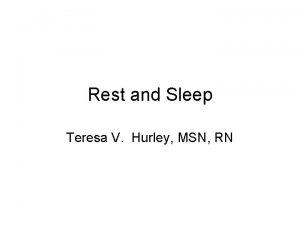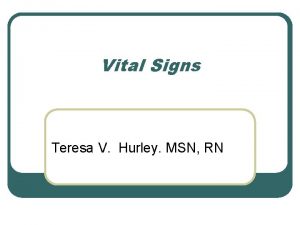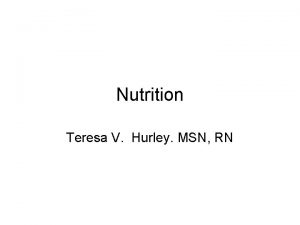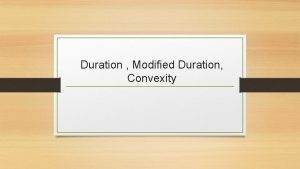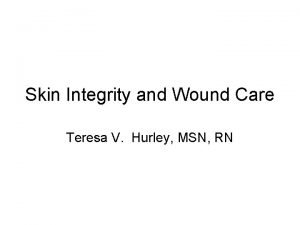Pain Teresa V Hurley MSN RN Duration of














- Slides: 14

Pain Teresa V. Hurley, MSN, RN

Duration of pain o Acute n n o Rapid in onset, varies in intensity and duration Protective in nature Chronic n n n May be limited, intermittent, or persistent Lasts for 6 months or longer Periods of remission or exacerbation are common

Gate Control Theory of Pain o o o Relationship between pain and emotions Small and large diameter nerve fibers conduct and inhibit pain stimuli Gating mechanism determines impulses that reach the brain

Factors Affecting Pain Experience o o o o Culture Ethnic variables Family, gender, and age variables Religious beliefs Environment and support people Anxiety and other stressors Past pain experience

General Assessments of Pain o o o Client’s verbalization and description of pain Duration of pain Location of pain Quantity and intensity of pain Quality of pain Chronology of pain

General Assessments of Pain (continued) o o Aggravating and alleviating factors Physiologic indicators of pain Behavioral responses Effect of pain on activities and lifestyle

Wilda Scale o o o Words that describe the pain Intensity of pain Location of pain Duration of pain Aggravating or alleviating factors

Nursing Interventions for Pain o o Establishing trusting nurse-patient relationship Initiating nonpharmacologic pain relief measures Considering ethical and legal responsibility to relieve pain Teaching patient about pain

Nonpharmacologic Pain Relief Measures o Distraction o Music o Humor o Imagery

Nonpharmacologic Pain Relief Measures o o Relaxation Acupuncture

Nonpharmacologic Pain Relief Measures o Hypnosis o Biofeedback o Therapeutic touch

Pharmacologic Pain Relief Measures o o Analgesic administration Nonopiod analgesics Opioids or narcotic analgesics Adjuvant drugs (enhance the action of main drug)

Numeric Sedation Scale o o 1 — awake and alert, no action necessary 2 — occasionally drowsy, but easy to arouse, no action necessary 3 — frequently drowsy, drifts off to sleep during conversation, reduce dosage 4 — somnolent with minimal or no response to stimuli, discontinue opiod, consider use of naloxone

Pain Management Regimens for Cancer or Chronic Pain o o Give medications orally if possible. Administer medications around the clock time rather than prn. Adjust the dose to achieve maximum benefit with minimum side effects. Allow client’s as much control as possible over the regimen.






